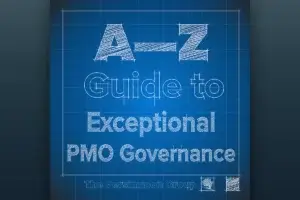After two decades of disrupting the software industry, Agile methodologies are at a crossroads — caught between revolutionary ideals and corporate realities. It’s time to reconsider what “being Agile” truly means.
Agile is having a mid-life crisis. After twenty years of disrupting the software industry, it’s starting to show its age. Like a former rebel who now has a mortgage and a minivan, it’s struggling to reconcile its revolutionary roots with its corporate reality.
And like many mid-life crises, it’s time for some honest self-reflection.
The Promise vs. The Reality
Remember when Agile was going to save software development? Or, when Scrum, the most widely adopted agile framework, was the answer to every project management woe? Two decades later, we’ve learned some hard truths:
First, “pure” Scrum—that idealized framework we’ve all been chasing—is like a unicorn: beautiful in theory but rarely seen in the wild.
The reality of business doesn’t always accommodate two-week sprints, dedicated teams, and product owners with perfect vision and ultimate authority.
Second, we can’t definitively prove that agile delivers better results than other approaches. Yes, there are success stories. But there are just as many tales of agile transformations that resulted in nothing but new titles and more meetings.
The Curse of Dogmatism
Somewhere along the way, agile developed an orthodoxy that would make medieval monks blush. “That’s not real Scrum” became the “No True Scotsman” fallacy of the software world. We created a dichotomy where you were either doing it right (following every rule to the letter) or doing it wrong (and therefore not really doing agile at all).
This rigidity is ironic for a movement born from the desire to be more adaptive and flexible. We’ve become so focused on following the “rules” of agile that we’ve forgotten its core principle: uncovering better ways of developing software by doing it.
The Enterprise Reality Check
Large enterprises aren’t startups, and pretending they are doesn’t help anyone. The reality is that most large organizations need to:
- Forecast budgets and resources well in advance
- Manage complex dependencies across multiple teams and products
- Navigate regulatory requirements and audit trails
- Balance innovation with maintenance
- Coordinate changes across diverse stakeholder groups
These aren’t anti-agile concerns—they’re business realities. And while agile principles can help address these challenges, pretending they don’t exist or don’t matter isn’t helpful.
Beyond the Binary
The problem isn’t that agile doesn’t work—it’s that we’ve turned it into a binary choice. You’re either agile or you’re not. You’re either enlightened or you’re stuck in the dark ages of waterfall.
This false dichotomy ignores the complexity of modern organizations. A startup building a new app has different needs than a bank maintaining a core transaction system. A team developing internal tools faces different constraints than one working on customer-facing products.
Imagine a healthcare company developing patient management software. This team could embrace Scrum principles by maintaining regular customer feedback loops and embracing change, while also incorporating structured documentation practices to meet regulatory requirements. By rejecting the false binary of “pure Scrum versus waterfall,” they could create a hybrid approach that delivers better results than either methodology alone could achieve.
The Path Forward
So, where do we go from here? First, we need to rediscover the empiricism on which agile was built. Instead of asking, “Is this real agile?” we should ask, “Is this helping us deliver better software?”
We need to acknowledge that:
- Different contexts require different approaches
- “Pure” agile isn’t always possible or desirable
- The goal is delivering value, not methodology compliance
- Evolution requires experimentation and adaptation
Most importantly, we need to move beyond the idea that agile is the end of the evolutionary line for software development. Twenty years ago, it was a revolutionary step forward, but maybe it’s time to take another step.
Time for a New Revolution?
Agile’s mid-life crisis doesn’t have to end in disaster. Like any good mid-life reflection, it can lead to growth and renewal. But first, we need to let go of some cherished beliefs:
- That there’s one “right” way to do agile
- That agile is the final answer to software development
- That methodology purity matters more than results
The software industry has changed dramatically since the Agile Manifesto was written. Our development approaches need to evolve, too. Maybe instead of arguing about whether something is “really” agile, we should ask what comes next.
The next revolution in software development won’t come from refining agile practices. It will come from having the courage to move beyond them—just as agile required us to move beyond waterfall.
Are we ready for that conversation?










